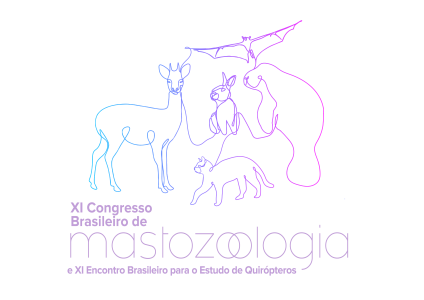Dados do Trabalho
Título:
THE RELATIVE IMPORTANCE OF FOREST COVER AND PATCH-LEVEL DRIVERS FOR PHYLLOSTOMID BAT COMMUNITIES IN THE AMAZONIAN SAVANNAS
Resumo:
Environmental heterogeneity, due to variation in local and landscape level factors, is one of the key drivers of patterns of biodiversity and species habitat use. However, local and landscape variables can act differently upon different components of biodiversity, such as diversity and species composition. The Amazonian savannahs are excellent natural laboratories for this type of study. In addition, bats are an excellent group for studying patterns of species distribution, community assembling and responses to landscape and patch-level drivers in different diversity dimensions. Thus, we aim to explore how forest cover in the landscape and patch-level variables affect the patterns of species abundance, functional traits, and taxonomic, functional and phylogenetic diversity of Phyllostomid bats in forest patches of the Savannas of Amapá, an Amazonian savanna, in both the wet and dry seasons. We used mist nets to survey bats in 26 forest patches within a savanna matrix, and quantified forest cover in buffers of 500, 1000, 1500, 2000 and 2500 metres around each patch, and tree height and density, canopy cover, and vegetation clutter in the understorey at the patch level. Taxonomic, functional and phylogenetic diversity in the wet season increased with the proportion of forest cover in the 2500 m buffer. Vegetation clutter was negatively related to taxonomic and functional diversity in the wet season. In the dry season, average tree height positively affected taxonomic and functional diversity. Patch-level variables were more important than forest cover in explaining the average functional traits in both seasons. We found seasonal variation in the relationships between components of bat diversity and different drivers, suggesting seasonal movements of bat assemblages between components of this complex landscape. Since both forest cover in the landscape and patch-level variables are important for Phyllostomid bat diversity, conservation plans should consider forest conservation at the landscape level and maintenance of forest patch quality.
Financiamento:
Coordenação de Aperfeiçoamento de Pessoal de Nível Superior (CAPES)
Neotropical Grassland Conservancy (01098803-5)
National Geographic Society (EC-59186R-19 and NGS-83254R-20)
Rufford Foundation (25585-1)
Bat Conservation International
Área
Ecologia
Autores
William Douglas Carvalho, Luís Miguel Rosalino, Bruna Silva Xavier, Isaí Jorge de Castro, Renato Richard Hilário, Tiago Miranda Marques, José Júlio de Toledo, Marcus Vinícius Vieira, Jorge M. Palmeirim, Karen Mustin
